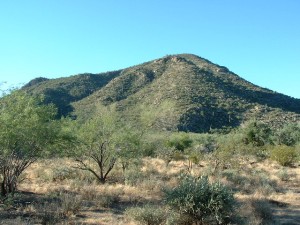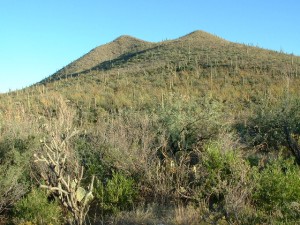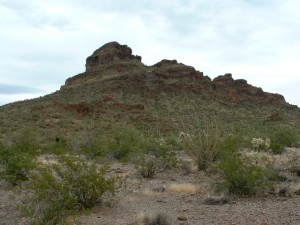Hello everyone. The past few days here in the desert have been hotter than a two-dollar pistol. Deadly-hot, in fact. Our temperatures have been ten to fifteen degrees above normal. Even so, visitors to the Old Pueblo have been going out on our local trails and have obviously been unprepared. This afternoon, in our 105-degree heat, a young woman who was in distress was rescued after having hiked only two miles up a popular trail. She knew she was in trouble and called 911 – they got to her in time and she lived to tell about it.
Yesterday, it also reached 105 degrees Fahrenheit here in Tucson. A 35-year-old German tourist collapsed on a much-used trail in Saguaro National Park. By the time rescue personnel arrived, she had died.
Two days before this incident, a young tourist and her family were hiking on another popular trail near Tucson. Wisely, they had started early, but four hours into their hike the young woman started experiencing heat-related symptoms. She was unable to make it back to their vehicle with her family. By the time rescuers reached her, six hours after the group had set out, she was pronounced dead.
It is tragic that these deaths occurred when they could probably have been avoided with a few extra precautions. I can understand how an undocumented person who enters the US without proper supplies, maps and knowledge can easily run into trouble and die out in the desert, but nobody should be dying on the edge of a metropolitan area of a million people.
So, these recent events have compelled me to write this article in the hope that even one person may be saved from a horrible death in the desert. What I am about to write may be shocking to some of you, but I hope that if everyone is aware of the symptoms that indicate that you are in trouble out in the heat, you can take steps to save yourself.
Medical science has clearly identified six stages that the human body goes through before death occurs from the heat. These stages are the same for everyone, even though some factors may delay the inevitable. Genetics may play a part, as can your level of fitness. If you are well-hydrated beforehand, and can rest and seek some shade, you may survive longer. It doesn’t seem to matter if you are a man or a woman. Elderly people are most at risk from dying from the heat (hyperthermia). You could last from hours to days while you pass through the six stages.
Stage One – Heat Stress
In this earliest stage, you may experience thirst, headache and general discomfort. Maybe some heat rash and clumsiness as you finish your hike. Most of us have experienced “sausage fingers”, as they swell up after several hours of walking in the heat. These symptoms may be more pronounced if you were dehydrated before you started out. This first stage is nothing too serious in and of itself, but it is still the first step leading to death in the heat.
Stage Two – Heat Fatigue
You sweat a lot – water is passing through your skin and evaporating, trying to keep you cool. Exposed skin will burn. Your lips burn from the sun, and will dry out from the wind. You keep licking them, but this only aggravates them until they crack and bleed. If you still have water to drink, you’re okay. But before long, your water gets as hot as coffee. The worst thing you can do is to drink alcohol, because it makes you thirstier. The air is so dry in the desert (our relative humidity was 2% here today) that your sweat evaporates as quickly as it comes through your skin, so quickly that you don’t even know that you’re sweating. With every breath you take, you are drying out your sinuses, mouth and throat. Your tongue wants to dry out, so you keep taking sips of your hot water. Your spit turns to a nasty paste, so you keep taking sips of your precious water. By now, every breath you take causes your lungs to give up more of your precious moisture. It’s a losing battle. The fluid in your lungs helps transport oxygen through the tissues into your blood. But because you now have less fluid in your lungs, you have less oxygen available. So you breathe harder, drying yourself out even more. Even your tears cause you to lose more moisture, making your eyes dry out and feel scratchy.
Stage Three – Heat Syncope
As strange as it may seem, your skin is now getting colder and your face turns pale. It’s getting hard to talk – your tongue is getting dry and sticky. You have difficulty speaking and your thoughts aren’t as clear as before. Syncope means “contraction” – you find it hard to form complete words. When you urinate, you are losing precious salt and fluid. Your situation is going from bad to worse.
Stage Four – Heat Cramps
Now you are in real trouble. If you have only been drinking water, your body has been dumping salts. Your muscles can’t function properly without salts – that’s why you’re way better off drinking some electrolyte replacement solution. Most migrants coming up from Mexico know this. I’ve seen countless empty bottles of electrolyte (like the stuff you give to babies to help with dehydration caused by diarrhea and vomiting) littering the desert floor along their pathways. But you’ll eventually run out of that, too.
Now the muscle cramps begin. This affects everyone a bit differently, but I can tell you that when I get leg cramps at this stage, it is a screaming agony. A rock-hard knot will form in my calf or thigh, completely disabling me. I have to sit or lie down and try and massage the cramp until it goes away, because if I don’t, it’s impossible to walk. And if you fall to the ground in the Sonoran desert, you are going to land on cactus, rocks and other sharp things. And if you lose a little blood, that’s more fluid you’ve lost. The same with tears – the ones you shed as you fight your way through the cramps will only dehydrate you more. Your extremities hurt, even your heart can hurt. It is hard to swallow.
Your abdomen starts to cramp. It feels like you need to have a bowel movement. For a woman, it feels like you’re going into labor, having contractions. Men can now understand what a menstrual cramp feels like. You want to pass gas but can’t. You’re doubled over.
Even at this stage, which is pretty bad, most people can be saved. With fluids and an IV, you can recover. Getting out of the heat, especially into an air-conditioned vehicle, could save your life. However, if you aren’t rescued at this point, you are on the edge of a death spiral and your chances of surviving are slim indeed.
I am going to stop at this point and save the final stages, Five and Six, for the next post. Again, I need to warn you that that discussion will be shocking, much more so than this first part has been.
TO BE CONTINUED……………..
Please visit our Facebook page at https://www.facebook.com/pages/Desert-Mountaineer/192730747542690



